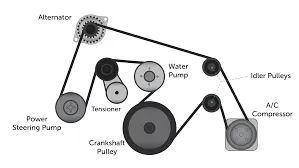- Arabic
- French
- Russian
- Spanish
- Portuguese
- Turkish
- Armenian
- English
- Albanian
- Amharic
- Azerbaijani
- Basque
- Belarusian
- Bengali
- Bosnian
- Bulgarian
- Catalan
- Cebuano
- Corsican
- Croatian
- Czech
- Danish
- Dutch
- Afrikaans
- Esperanto
- Estonian
- Finnish
- Frisian
- Galician
- Georgian
- German
- Greek
- Gujarati
- Haitian Creole
- hausa
- hawaiian
- Hebrew
- Hindi
- Miao
- Hungarian
- Icelandic
- igbo
- Indonesian
- irish
- Italian
- Japanese
- Javanese
- Kannada
- kazakh
- Khmer
- Rwandese
- Korean
- Kurdish
- Kyrgyz
- Lao
- Latin
- Latvian
- Lithuanian
- Luxembourgish
- Macedonian
- Malgashi
- Malay
- Malayalam
- Maltese
- Maori
- Marathi
- Mongolian
- Myanmar
- Nepali
- Norwegian
- Norwegian
- Occitan
- Pashto
- Persian
- Polish
- Punjabi
- Romanian
- Samoan
- Scottish Gaelic
- Serbian
- Sesotho
- Shona
- Sindhi
- Sinhala
- Slovak
- Slovenian
- Somali
- Sundanese
- Swahili
- Swedish
- Tagalog
- Tajik
- Tamil
- Tatar
- Telugu
- Thai
- Turkmen
- Ukrainian
- Urdu
- Uighur
- Uzbek
- Vietnamese
- Welsh
- Bantu
- Yiddish
- Yoruba
- Zulu
Nov . 10, 2024 23:30 Back to list
Comparing Poly V Belts and Serpentine Belts for Optimal Performance and Durability
Understanding the Poly V Serpentine Belt A Key Component in Modern Vehicles
In the world of automotive mechanics, the efficiency and reliability of a vehicle's operational components are critical for optimal performance. Among these components, the serpentine belt plays a vital role, and its variant, the poly V serpentine belt, has become increasingly popular in modern engines. This article seeks to explore the significance, functionality, and advantages of the poly V serpentine belt, while also highlighting its differences compared to traditional belts.
What is a Serpentine Belt?
A serpentine belt is a long, continuous belt that wraps around multiple components in an engine, such as the alternator, power steering pump, water pump, and air conditioning compressor. Its design allows for a single belt to replace several individual belts that were commonly used in older vehicles. This not only simplifies the engine assembly but also reduces weight and friction, leading to a more efficient engine performance.
The Emergence of the Poly V Serpentine Belt
The poly V serpentine belt, also known as a multi-ribbed belt, is an advanced version of the traditional serpentine belt. Its design features multiple parallel grooves (or ribs) along its length, which enhance its grip and allow for increased torque transmission. Made from high-quality rubber compounds and fiber reinforcements, the poly V belt offers superior durability and flexibility, making it suitable for the demanding operating conditions of modern engines.
Advantages of the Poly V Serpentine Belt
1. Improved Power Transmission The poly V design increases the contact surface area between the belt and the pulleys. This results in improved power transmission efficiency, enabling the engine to deliver power more effectively to various components.
2. Reduced Slippage Traditional belts can sometimes slip under high-load conditions, which can lead to decreased performance and potential damage. The poly V design minimizes slippage, ensuring consistent performance even during peak demands.
poly v serpentine belt

3. Quieter Operation The design and materials used in poly V belts contribute to reduced noise levels during operation. This is particularly beneficial for modern vehicles, where consumer expectations for quiet, smooth performance are high.
4. Greater Flexibility and Adjustability Poly V belts are more flexible than traditional belts, allowing them to bend around tighter corners and fit into compact engine designs that are common in today’s vehicles.
5. Longer Lifespan The construction of poly V belts typically results in a longer lifespan than standard belts. With proper maintenance, these belts can last significantly longer, reducing the frequency of replacements and associated costs for vehicle owners.
Maintenance and Replacement
Despite their durability, poly V serpentine belts are not immune to wear and tear. Routine inspections are essential to ensure that they remain in optimal condition. Signs of wear include cracking, fraying, or glazing on the belt surface. If any of these signs are observed, it is wise to replace the belt promptly to prevent potential engine issues.
In general, manufacturers offer guidelines on when to replace serpentine belts, typically based on mileage. However, factors such as climate, driving conditions, and overall vehicle usage can affect the lifespan of the belt. Regular maintenance checks can help identify issues early and ensure the longevity of the serpentine system.
Conclusion
The poly V serpentine belt represents an evolution in automotive engineering, providing a reliable solution for power transmission in modern vehicles. Its unique design offers numerous advantages, including improved efficiency, reduced noise, and a longer lifespan. As automotive technology continues to advance, the importance of understanding and maintaining key components like the poly V serpentine belt cannot be overstated. For vehicle owners and enthusiasts alike, ensuring that the serpentine belt is in good condition is essential for maintaining overall vehicle performance and reliability. As we move forward in the age of increasingly complex engine designs, the poly V serpentine belt will undoubtedly remain a central figure in the automotive landscape.
-
Upgrade Power Steering Pump Belt for Smooth, Quiet Operation
NewsAug.27,2025
-
Precision Timing Belt & Chain: Engine Performance & Durability
NewsAug.26,2025
-
Precision Lathe Drive Belts: Durable & Reliable Performance
NewsAug.25,2025
-
84.5 Serpentine Belt: Durable & Precision Fit for Your Engine
NewsAug.24,2025
-
Premium Ribbed Drive Belts for Quiet Power Transmission
NewsAug.23,2025
-
High-Performance Vehicle Timing Belt for Engine Precision
NewsAug.22,2025

